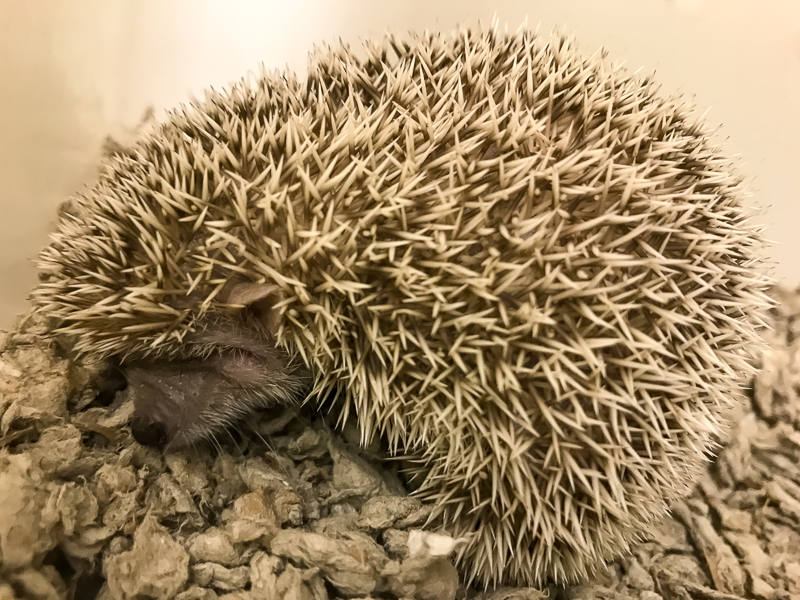Tenrecs in torpor
For immediate release ‐ January 27, 2021
Contact: Jessica Wackes, 919.707.9850. Images available upon request

Shorter days and cooler weather can bring about lots of behavioral changes in different animals. Some migrate to warmer climates, while others gather and store food for the winter season.
For the Museum’s Lesser Hedgehog Tenrecs (Echinops telfairi), it means settling into torpor, a period of inactivity when an animal’s body temperature, heart rate and metabolism slow down. This process allows the animal to conserve energy when food is not as readily available.
Torpor is not to be confused with the more familiar process of hibernation. Animals in hibernation enter a prolonged state of hypothermia that may last up to several weeks at a time, allowing the animal to survive cold external temperatures. Torpor does not typically last as long as hibernation, nor does it exclusively occur during periods of cold weather.
A variety of creatures experience torpor, including birds, rats and small mammals. For wild tenrecs, torpor usually takes place during their habitat’s dry season and, unusually, lasts between three to five months.
Eight tenrecs are currently housed at the Museum’s downtown Raleigh location. They begin showing signs of torpor in mid-to-late September, around the same time daylight hours become noticeably shorter. Our tenrecs are not exposed to seasonal changes in their enclosures; this is an innate process they undergo each year.

During torpor, the Museum’s tenrecs have a notable decrease of food input (and output!) and they also appear sluggish or sleepy in their movements. They still show some response to Museum handlers, however, they are not nearly as active as they are during the spring and summer months. As soon as the days start getting a bit longer, though, their activity level increases.
In the wild, Lesser Hedgehog Tenrecs are exclusively found in southern Madagascar. See a map of where tenrecs live on the Museum’s website. They occupy tropical dry forests, savannah and grasslands, and while the species is not endangered, their habitats are, due to deforestation, invasive species and over-collection of native species.
Museum experts are helping tenrecs by participating in the Association of Zoos and Aquariums (AZA) Species Survival Plan Program, which aims to maintain genetic diversity in managed care and to promote conservation of wild species through education, research and public outreach.
In the past, the Museum’s tenrecs have been excellent animal ambassadors for their counterparts in the wild, delighting guests of all ages through our programs and educational experiences. Stay tuned to find out when they can make public appearances again. Until then, sweet dreams little ones!
By Amanda Hapeman, Ambassador Animal Technician and Micah Beasley, PR & Marketing Coordinator

